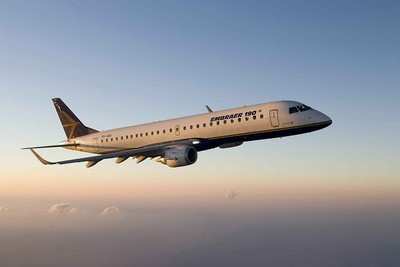Fri, Sep 15, 2017
Transportation Safety Board Of Canada Releases Investigation Final Report
In the release of its investigation report (A16O0066) into a May 2016 in-flight avionics compartment fire, the Transportation Safety Board of Canada found that a fluid contaminant caused the fire that disabled electrical power distribution to several systems of the aircraft.

On 25 May 2016, an Air Canada Embraer ERJ 190-100 was operating as flight ACA361 from Boston/General Edward Lawrence Logan International Airport, Massachusetts, to Toronto/Lester B. Pearson International Airport, Ontario. While en route, warning lights illuminated and associated alarms sounded, alerting the crew that the aircraft was in an electrical emergency condition, and that the main sources of electrical power were offline. The flight crew followed the electrical emergency checklist and after a period of ten minutes, most electrical systems were restored. With main power restored, the aircraft continued to destination and landed uneventfully. No emergency was declared, and no injuries were reported. Air Canada maintenance personnel inspected the aircraft following arrival and noticed extensive fire and smoke damage to the right integrated control center.
The investigation determined that a fluid contaminant had come into contact with the integrated control center and caused arcing, which led to the fire. The fire eventually disabled the main electrical system. As a result of the electrical failure, the smoke detector in the recirculation bay remained unpowered during the period of time when smoke was likely detectable. Due to the lack of smoke or fire warning, the flight crew was unaware of the severity of the situation when it elected to continue to destination. If flight crews are not fully aware of the severity of an emergency situation and exercise their discretion not to land at the nearest suitable airport, then there is an increased risk that a flight may be continued to destination when safer options exist.
Following this occurrence, the manufacturer has proposed changes to its electrical emergency procedure and checklist.
(Source: TSB Canada news release. Image from file. Not incident airplane)
More News
From 2023 (YouTube Version): Legacy of a Titan Robert (Bob) Anderson Hoover was a fighter pilot, test pilot, flight instructor, and air show superstar. More so, Bob Hoover was an i>[...]
Get The Latest in Aviation News NOW on Instagram Are you on Instagram yet? It's been around for a few years, quietly picking up traction mostly thanks to everybody's new obsession >[...]
Aero Linx: B-52H Stratofortress The B-52H Stratofortress is a long-range, heavy bomber that can perform a variety of missions. The bomber is capable of flying at high subsonic spee>[...]
Altimeter Setting The barometric pressure reading used to adjust a pressure altimeter for variations in existing atmospheric pressure or to the standard altimeter setting (29.92).>[...]
"Knowing that we play an active part in bettering people's lives is extremely rewarding. My team and I are very thankful for the opportunity to be here and to help in any way we ca>[...]
 Classic Aero-TV: Remembering Bob Hoover
Classic Aero-TV: Remembering Bob Hoover ANN FAQ: Follow Us On Instagram!
ANN FAQ: Follow Us On Instagram! ANN's Daily Aero-Linx (05.15.24)
ANN's Daily Aero-Linx (05.15.24) ANN's Daily Aero-Term (05.15.24):Altimeter Setting
ANN's Daily Aero-Term (05.15.24):Altimeter Setting Aero-News: Quote of the Day (05.16.24)
Aero-News: Quote of the Day (05.16.24)



